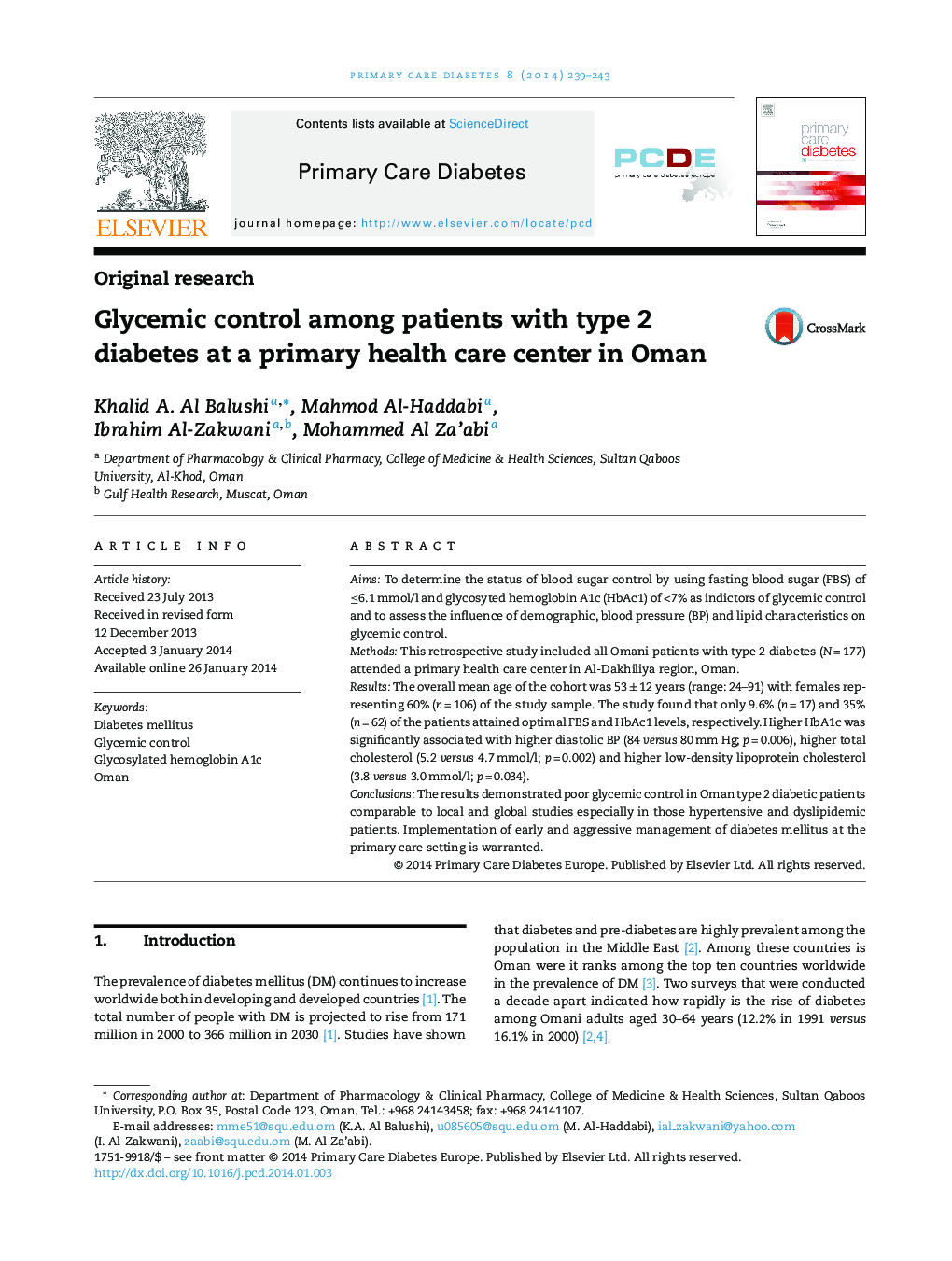| Article ID | Journal | Published Year | Pages | File Type |
|---|---|---|---|---|
| 2676158 | Primary Care Diabetes | 2014 | 5 Pages |
AimsTo determine the status of blood sugar control by using fasting blood sugar (FBS) of ≤6.1 mmol/l and glycosyted hemoglobin A1c (HbAc1) of <7% as indictors of glycemic control and to assess the influence of demographic, blood pressure (BP) and lipid characteristics on glycemic control.MethodsThis retrospective study included all Omani patients with type 2 diabetes (N = 177) attended a primary health care center in Al-Dakhiliya region, Oman.ResultsThe overall mean age of the cohort was 53 ± 12 years (range: 24–91) with females representing 60% (n = 106) of the study sample. The study found that only 9.6% (n = 17) and 35% (n = 62) of the patients attained optimal FBS and HbAc1 levels, respectively. Higher HbA1c was significantly associated with higher diastolic BP (84 versus 80 mm Hg; p = 0.006), higher total cholesterol (5.2 versus 4.7 mmol/l; p = 0.002) and higher low-density lipoprotein cholesterol (3.8 versus 3.0 mmol/l; p = 0.034).ConclusionsThe results demonstrated poor glycemic control in Oman type 2 diabetic patients comparable to local and global studies especially in those hypertensive and dyslipidemic patients. Implementation of early and aggressive management of diabetes mellitus at the primary care setting is warranted.
